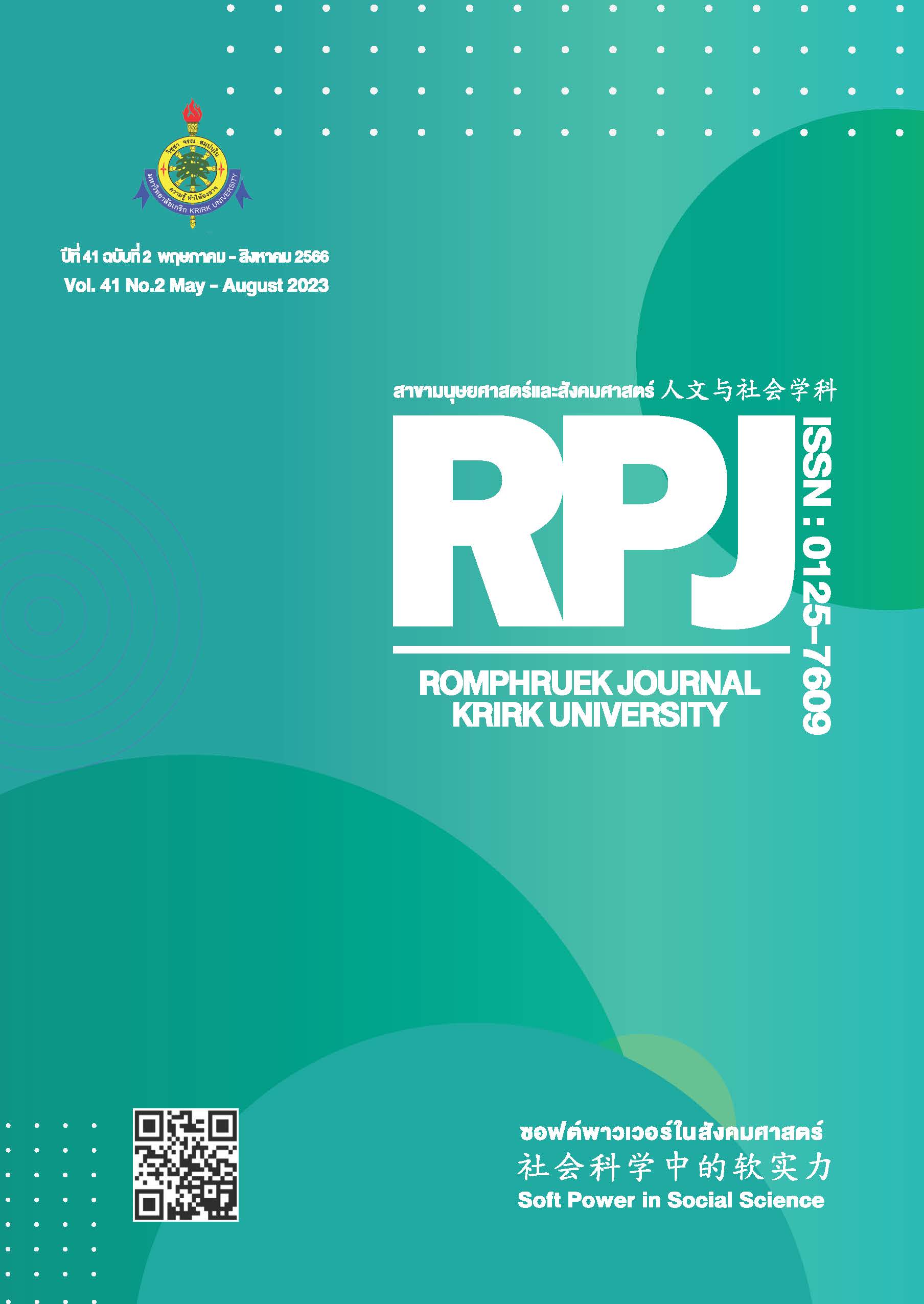Guidelines for Development of Digital Technology Intergrated Art Activity Package to Promote Motivation in Art Creation for Preschoolers
Main Article Content
Abstract
This evaluative research aims to examine the guidelines for development of digital technology intergrated art activities package to promote motivation in art creation for preschoolers. Data collection consisted of studying related document and observing in early childhood class and research and interviewing of 12 experts. The results of this research showed that the 4 principles of the guidelines for the development of digital technology integrated art activities package to promote motivation in art creation for preschoolers consisted of 1) Aesthetic Experiences 2) Art Making Experiences 3) Encounters with Art and 4) Reinforcement. The process consisted of 3 steps as follows: Step 1) creating motivation and connecting experiences: focusing on children to used multi-sensory, Step 2) creating art with digital technology: combining traditional arts with digital technology and Step 3) summarizing and encountering with art: the children reviewed their knowledge and connected to their experiences through games or educational applications.
Article Details

This work is licensed under a Creative Commons Attribution-NonCommercial-NoDerivatives 4.0 International License.
Every article published in the Romphruek Journal of the Humanities and Social Sciences is the opinion and point of view of the authors. Thery're not the viewpoint of Krirk University or the editored department. Any part or all of the articles for pablication must be clearly cited.
References
กระทรวงศึกษาธิการ. (2546). พระราชบัญญัติการศึกษาแห่งชาติ พุทธศักราช 2542 แก้ไข เพิ่มเติม (ฉบับที่ 2) พุทธศักราช 2545. กรุงเทพฯ : คุรุสภา.
กระทรวงศึกษาธิการ. (2560). หลักสูตรการศึกษาปฐมวัย พุทธศักราช 2560. กรุงเทพฯ : โรงพิมพ์ชุมนุม สหกรณ์การเกษตรแห่งประเทศไทย จำกัด.
ใจทิพย์ ณ สงขลา. (2550). E-Instrutional Design วิธีวิทยาการออกแบบการเรียนการสอนอิเล็กทรอนิกส์. กรุงเทพมหานคร: ศูนย์ตำราและเอกสารวิชาการ คณะครุศาสตร์.
ดนู จีรเดชากุล. (2541). นันทนาการสำหรับเด็ก. กรุงเทพฯ: ไทยวัฒนาพานิช.
นิฤมล สุวรรณศรี. (2556). การพัฒนารูปแบบการจัดการเรียนรู้แบบ 4M เพื่อส่งเสริมทักษะการคิดเชิงเหตุผลสำหรับเด็กปฐมวัย. ปริญญานิพนธ์ กศ.ด. (การศึกษาปฐมวัย). บัณฑิตวิทยาลัยมหาวิทยาลัยศรีนครินทรวิโรฒ, กรุงเทพฯ.
นิฤมล สุวรรณศรี และเอื้ออารี ทองแก้ว จันทร. (2559). เอกสารประกอบการเรียน รายวิชา 1074310 สื่อและเทคโนโลยีทางการศึกษา. คณะครุศาสตร์ มหาวิทยาลัยสวนดุสิต, กรุงเทพฯ.
มานิตา ลีโทชวลิต อรรถณุพรรณ และ อรกานต์ เพชรคุ้ม. (2558). เทคโนโลยีกับเด็กปฐมวัยใช้อย่างไรให้พอดี.วารสารศึกษาศาสตร์ มหาวิทยาลัยศิลปากร, 13(1), 23-34.
วาทินี บรรจง และ ศศิลักษณ์ ขยันกิจ. (2557). ผลการจัดประสบการณ์ศิลปะโดยบูรณาการแนวคิดเชิงออกแบบ. ศูนย์ส่งเสริมการพัฒนานวัตกรรม ตำราและเอกสารทางวิชาการ คณะครุศาสตร์ จุฬาลงกรณ์มหาวิทยาลัย, กรุงเทพฯ.
อัครพล ไชยโชค. (2562). การใช้เทคโนโลยีอย่างสร้างสรรค์ ปลูกปั้นเด็กปฐมวัยในศตวรรษที่ 21.วารสารครุศาสตร์จุฬาลงกรณ์มหาวิทยาลัย.47(4), 519- 538.
อนิวัฒน์ ทองสีดา. (2564). กิจกรรมศิลปะเครื่องมือพัฒนาเด็ก. (11 สิงหาคม 2565). สืบค้นจาก https://bsru.net/การจัดกิจกรรมศิลปะ-art-activity-managements/.
American Academy of Pediatrics Council on Communications and Media. (2011). Policy statement: Media use by children younger than 2 years. Pediatrics, 128(5), 1040 – 1045. doi: 10.1542/peds.2011-1753.
Eglinton, A. K. (2003). Art in the early years. London: Routledge Falmer.iPad Art Room. iKaleido-Creations and Creative Workflows. (February 8, 2022) Retrieved from https://www.ipadartroom.com/kaleido-creations/.
Cunningham M. The K-12 Art Room, Why, Where, And How To Make It Happen.(March 10, 2022). Retrieved from https://amt-lab.org/blog/2020/7/technology-in-the-k-12-art- room-why-where-and-how-to-make-it-happen.
NAEYC and Fred Rogers Center (FRC). (2012). Technology and interactive media as tools in early childhood programs serving children from birth through age 8. (January 14, 2022) Retrieved from https://www.naeyc.org/files/naeyc/PS_Technology_WEB.pdf.
Sarah Ackermann. (2017). To Swipe or Not Swipe, That Is the question: The iPad in Preschool Setting Learning 21st- Century Skills through Art Education.Eric Institute of Education Sciences, 70(3), 43-49.
UNESCO. (2010). Recognizing the potential of ICT in early childhood education. (February 5, 2022) Retrieved from https://iite.unesco.org/pics/publications/en/files/3214673.pdf.


